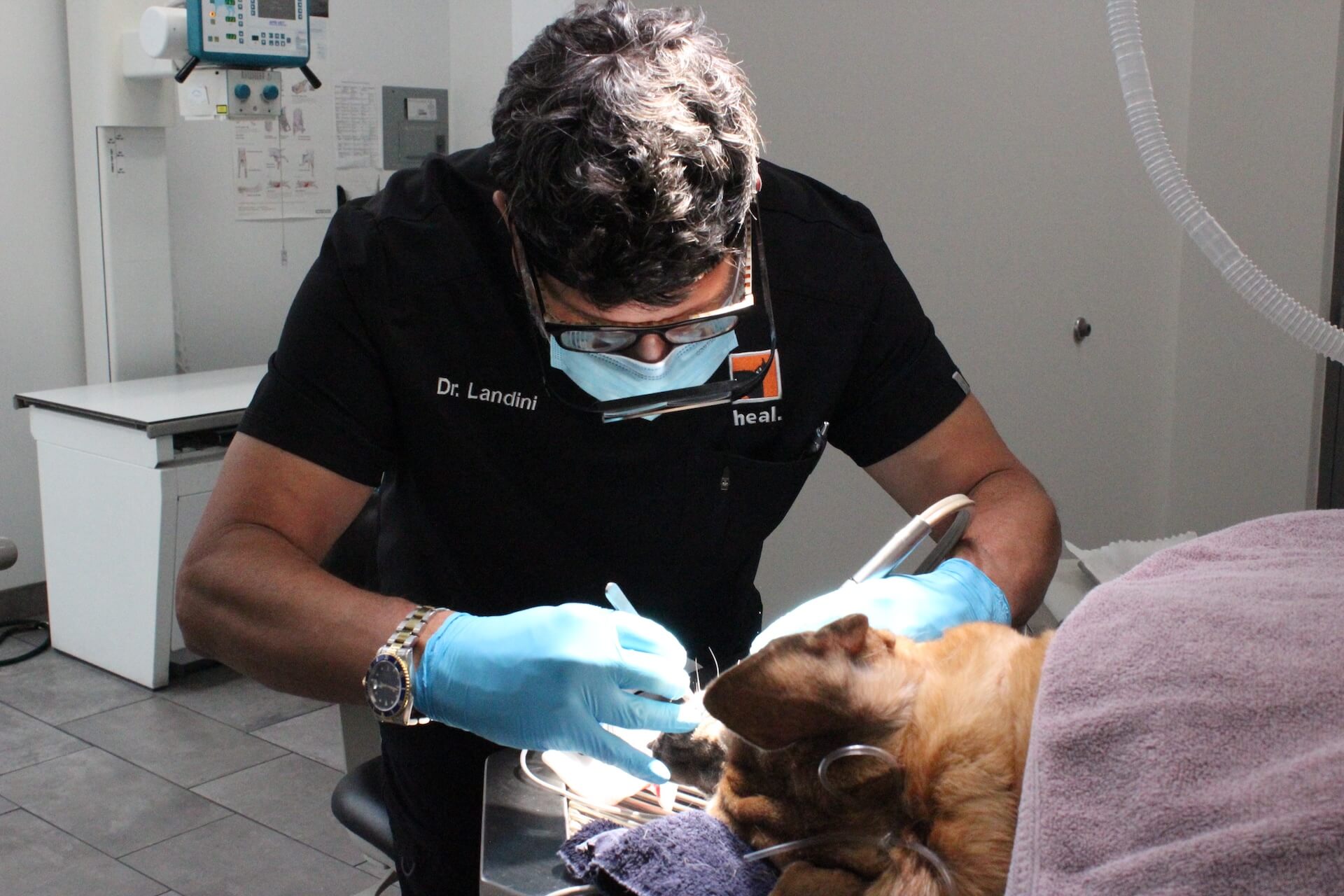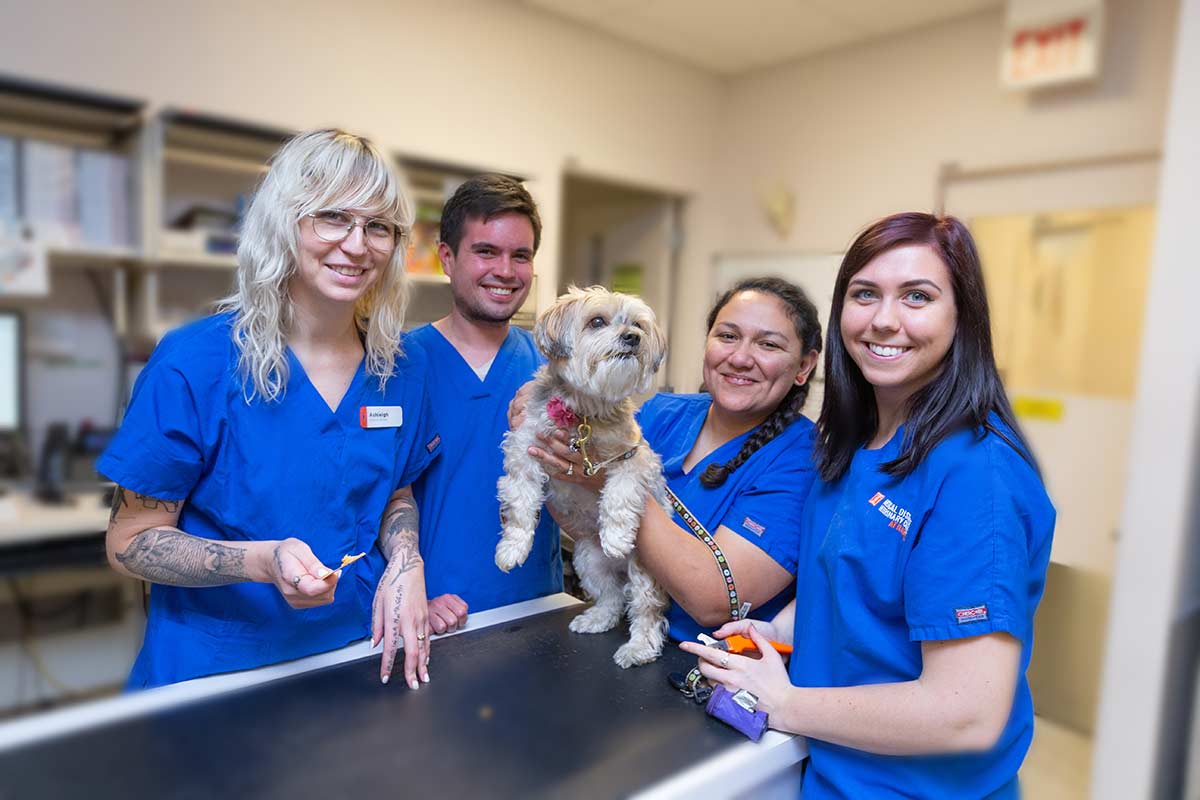Preparing for the Unexpected With animal emergency care bellingham
Wiki Article
Everything About Veterinarian Surgical Procedure: Recognizing the Value of Expert Care for Your Animals
Vet surgical treatment is a crucial component of animal health care. It incorporates numerous procedures, from routine optional surgical treatments to urgent treatments. Understanding the complexities of these surgeries can aid pet dog owners make informed decisions. The prep work, implementation, and recuperation stages are essential for ensuring the well-being of animals. With appropriate knowledge, owners can browse the intricacies of vet treatment. What variables should be taken into consideration before a pet dog undertakes surgical procedure?Kinds Of Vet Surgeries
When a pet requires medical intervention, recognizing the numerous sorts of vet surgical treatments can assist pet dog owners make notified decisions. Vet surgical procedures can be broadly categorized right into three main kinds: elective, immediate, and emergency surgeries. Optional surgeries, such as spaying or neutering, are intended treatments that are not right away lethal. Urgent surgical procedures, like those for international body removal, should be done quickly yet are not dangerous in the moment. Emergency situation surgical treatments, such as those dealing with serious injury or inner bleeding, are vital and call for immediate attention.Additionally, surgical procedures can vary in intricacy, ranging from minimally intrusive laparoscopic treatments to extra comprehensive open surgical procedures. Each kind of surgical procedure carries its own threats and healing processes. Recognizing these groups allows pet dog proprietors to engage in purposeful conversations with vets, causing much better results for their precious pets.Preparing for Your Family pet's Surgical treatment
Planning for a pet dog's surgery entails a comprehensive checklist to ensure all basics are covered. Effective communication with the veterinarian is important for recognizing the procedure and any type of needed pre-operative actions - tplo surgery. In addition, having clear post-operative care guidelines will certainly assist owners give the best assistance for their recuperating pet dogsPre-Surgery List Basics
Guaranteeing a smooth surgical experience for a pet dog needs mindful preparation and interest to detail. A pre-surgery checklist is vital for pet proprietors to adhere to. Initially, verifying the scheduled surgical procedure date and time is vital. Owners should additionally confirm that their pet has actually not eaten according to the vet's instructions, typically for 8-12 hours before surgical treatment. Gathering essential clinical documents, including inoculation history, is necessary for the veterinarian's evaluation. It is additionally suggested to prepare a comfortable space in your home for the pet dog's recovery after surgical procedure. Ultimately, proprietors must have a plan for transport to and from the veterinary center, ensuring that the animal is safe and comfy throughout the trip. Complying with these actions can considerably improve the medical experience.Communicating With Your Vet

Reliable interaction with the vet is vital for an effective surgical experience for pets. Owners ought to be prepared to discuss their animal's clinical history, including any kind of pre-existing conditions, medications, and allergic reactions. This details helps the veterinarian examine dangers and customize the surgical strategy as necessary. Furthermore, animal proprietors should ask inquiries pertaining to the procedure, anesthesia, and expected outcomes to guarantee they completely comprehend the procedure. Clearing up any type of questions can alleviate anxiety for both the pet and the owner. It is also crucial to interact any type of behavior changes or concerns observed in the family pet leading up to the surgery. Inevitably, clear dialogue cultivates depend on and cooperation, making sure that animals obtain the very best possible treatment throughout their surgical trip.
Post-Operative Care Instructions
After reviewing the surgical procedure with the veterinarian, family pet owners should concentrate on post-operative care directions to facilitate a smooth recuperation for their family pets. These guidelines typically consist of monitoring the surgical site for indicators of infection, such as redness or discharge. Pet dogs might require to be kept tranquil and restricted to protect against extreme activity that might interrupt healing. Pain monitoring is important, so proprietors need to follow the veterinarian's support on providing medications. Furthermore, dietary limitations may be advised to stay clear of gastrointestinal upset. Regular follow-up consultations are necessary to guarantee appropriate healing and resolve any kind of worries. By sticking to these post-operative care instructions, animal proprietors can substantially add to their pet dog's healing and overall health.The Surgical Refine Explained
The surgery for family pets includes important actions that assure their safety and healing. Pre-surgery preparations are vital for reducing risks, while post-operative treatment standards play a crucial duty in advertising healing. Comprehending these components assists pet dog owners navigate the medical experience more efficiently.Pre-Surgery Preparations
Before a pet dog goes through surgery, numerous vital prep work must occur to assure a risk-free and successful treatment. First, a detailed vet exam is important to assess the family pet's general health and wellness and recognize any type of potential dangers. This may consist of blood tests, imaging, or various other diagnostics. The veterinarian will likewise review anesthesia options customized to the pet's specific needs. Additionally, family pet proprietors are usually advised to withhold food and water for a defined time prior to surgery to minimize the risk of complications during anesthesia. It is necessary for owners to give a total case history, consisting of any type of medicines or allergies, guaranteeing the medical team has all required info. Appropriate communication and adherence to pre-surgery guidelines can greatly improve the end result of the procedure.Post-Operative Care Guidelines
Correct post-operative care is vital for ensuring a pet's recuperation following surgery. After the treatment, family pets ought to be checked very closely for any kind of signs of difficulties, such as extreme bleeding, swelling, or uncommon actions. It is essential to adhere to the vet's instructions pertaining to drugs, including painkiller and prescription antibiotics. Pet dogs must be kept in a peaceful, comfortable environment to minimize anxiety and advertise healing. Limiting activity is important; short, leashed strolls may be needed, yet jumping or running must be stayed clear of. Regular follow-up visits should be arranged to examine the recovery procedure. Additionally, the surgical website should be kept tidy and dry, description with any indications of infection reported to a veterinarian immediately. Adhering to these standards boosts recuperation end results.Anesthesia and Discomfort Monitoring
Reliable anesthetic and pain administration are crucial elements of veterinary surgical treatment, making sure that pets stay comfortable and safe throughout the procedure. Vets evaluate each animal's specific requirements, thinking about variables such as age, weight, health and wellness status, and the kind of surgical procedure being performed.Anesthesia protocols typically include a combination of pre-anesthetic medications, induction agents, and inhalant anesthetics, permitting specific control over the pet's level of awareness. Surveillance throughout surgery is essential; veterinarians continuously observe crucial signs to resolve any kind of possible complications promptly.Pain administration approaches may involve opioids, non-steroidal anti-inflammatory drugs (NSAIDs), and anesthetics, customized to the pet dog's particular scenario. This complex technique assists decrease pain and promotes a smoother surgical experience. By prioritizing reliable anesthesia and discomfort administration, vet professionals boost the overall welfare of family pets undertaking procedures, guaranteeing they obtain the highest requirement of treatment.Post-Operative Treatment and Recuperation
Complying with surgical procedure, the emphasis changes to post-operative care and recovery, which is crucial for guaranteeing a pet dog's risk-free return to regular tasks. During this period, pet dogs require a silent, comfortable atmosphere to aid healing. Owners need to very closely monitor their pet dogs for any kind of indications of discomfort or unusual behavior.Veterinary guidelines commonly consist of certain instructions connected to medication management, injury care, and nutritional modifications. It is crucial to stick to these suggestions to minimize problems and promote recovery. Family pets might require to be restricted from energetic tasks, such as running or jumping, during their healing period (canine tplo surgery).Regular follow-up consultations with the veterinarian allow for tracking of the pet dog's progress and timely adjustments to the treatment plan. Giving emotional support and friendship can additionally enhance a pet dog's recuperation experience, assisting to reduce stress and anxiety and stress and anxiety. On the whole, persistent post-operative treatment plays a substantial duty in attaining an effective recoveryRecognizing Issues After Surgical Treatment
Exactly how can pet dog owners recognize complications after surgical treatment? Recognition of certain indications is necessary for ensuring the wellness of pet dogs during recuperation. Usual signs consist of excessive swelling, soreness, or discharge at the surgical website, which might indicate infection. Furthermore, persistent pain, shown by whimpering or unwillingness to move, should trigger instant attention. Changes in cravings or water consumption can likewise suggest issues; a decline in the nearest vet these behaviors may signify pain or distress.Moreover, pet dog owners ought to check their pets for any kind of unusual behavior, such as sleepiness or difficulty breathing, as these can be indicators of serious problems. Throwing up or looseness of the bowels complying with surgical procedure might need immediate veterinary evaluation. Acknowledging these issues early can significantly impact a pet's recuperation procedure, stressing the value of watchfulness and timely interaction with a vet for any kind of concerning signs and symptoms.The Duty of Vet Specialists in Surgical Care
Vet professionals play an important role in making certain the safety and success of operations for animals, particularly adhering to surgical procedure when monitoring and treatment are vital. These experts consist of vets, veterinary technicians, and assistance staff, all of whom contribute specialized skills to the medical process.Before surgical treatment, vets carry out complete evaluations to analyze the pet's health, making sure that any hidden conditions are taken care of. Throughout the treatment, the surgical team supplies anesthesia, preserves sterilized environments, and keeps an eye on key signs, very important for lessening risks.Post-operative care is equally significant; vet experts observe for complications, handle pain, and overview owners on recovery methods. Their expertise allows them to recognize very early indicators of distress or infection, making certain prompt treatment. Ultimately, the joint efforts of vet experts in surgical treatment promote a risk-free setting, advertising the well-being of pet dogs throughout the medical journey.
Regularly Asked Inquiries
Just how Do I Select the Right Veterinary Cosmetic Surgeon for My Pet?
Selecting the best vet cosmetic surgeon entails researching certifications, reviewing reviews, and evaluating the center's atmosphere. It is important to assess the specialist's experience with details treatments discover this info here and their communication style when choosing.What Are Common Misconceptions About Vet Surgeries?
Usual false impressions regarding veterinarian surgical treatments consist of ideas that they are constantly high-risk, unneeded, or only for emergencies. Several family pet owners undervalue the advantages of preventative treatments and the ability associated with vet medical care.Just How Much Will My Pet's Surgical procedure Expense?
The cost of a pet's surgical procedure can vary significantly based on variables such as the type of treatment, the vet's experience, and geographical place (canine tplo surgery). Commonly, costs range from a couple of hundred to several thousand dollars
Can My Pet Consume Prior To Surgical Treatment?
Before surgical treatment, it is typically suggested that pet dogs abstain from eating for a specific duration. This fasting helps in reducing the threat of issues during anesthesia. Owners should consult their veterinarian for specific instructions tailored to their pet's needs.What happens if My Family Pet Has Pre-Existing Health Conditions?
When an animal has pre-existing wellness conditions, it's essential for the veterinarian to examine these elements before surgery. This assessment assurances ideal preventative measures are taken, lessening dangers and enhancing the pet's total security throughout the treatment.Report this wiki page